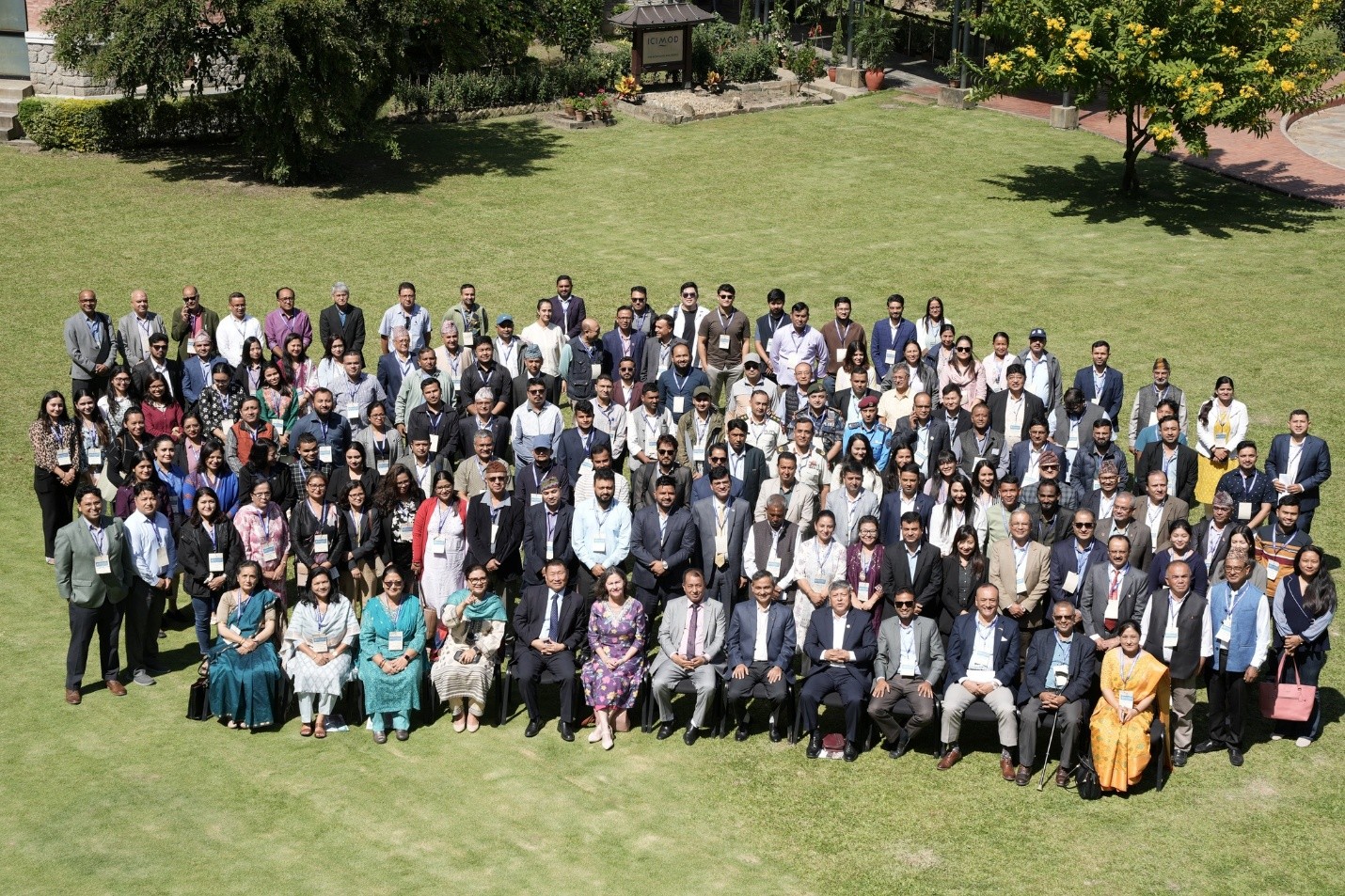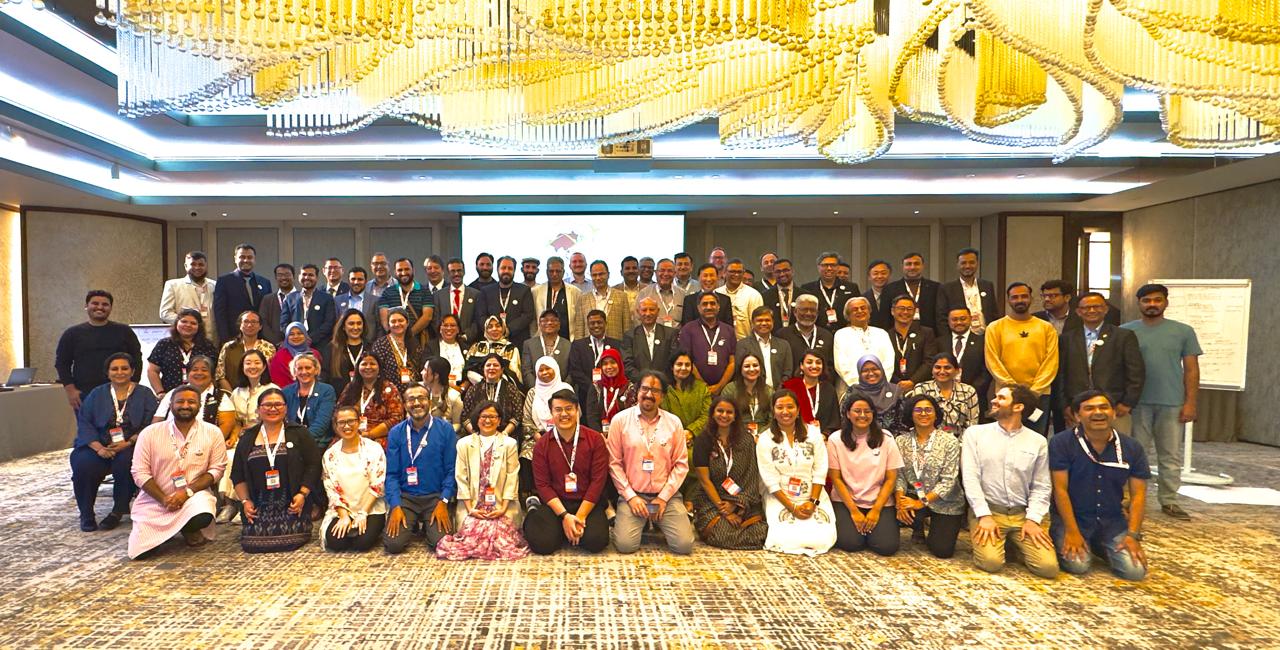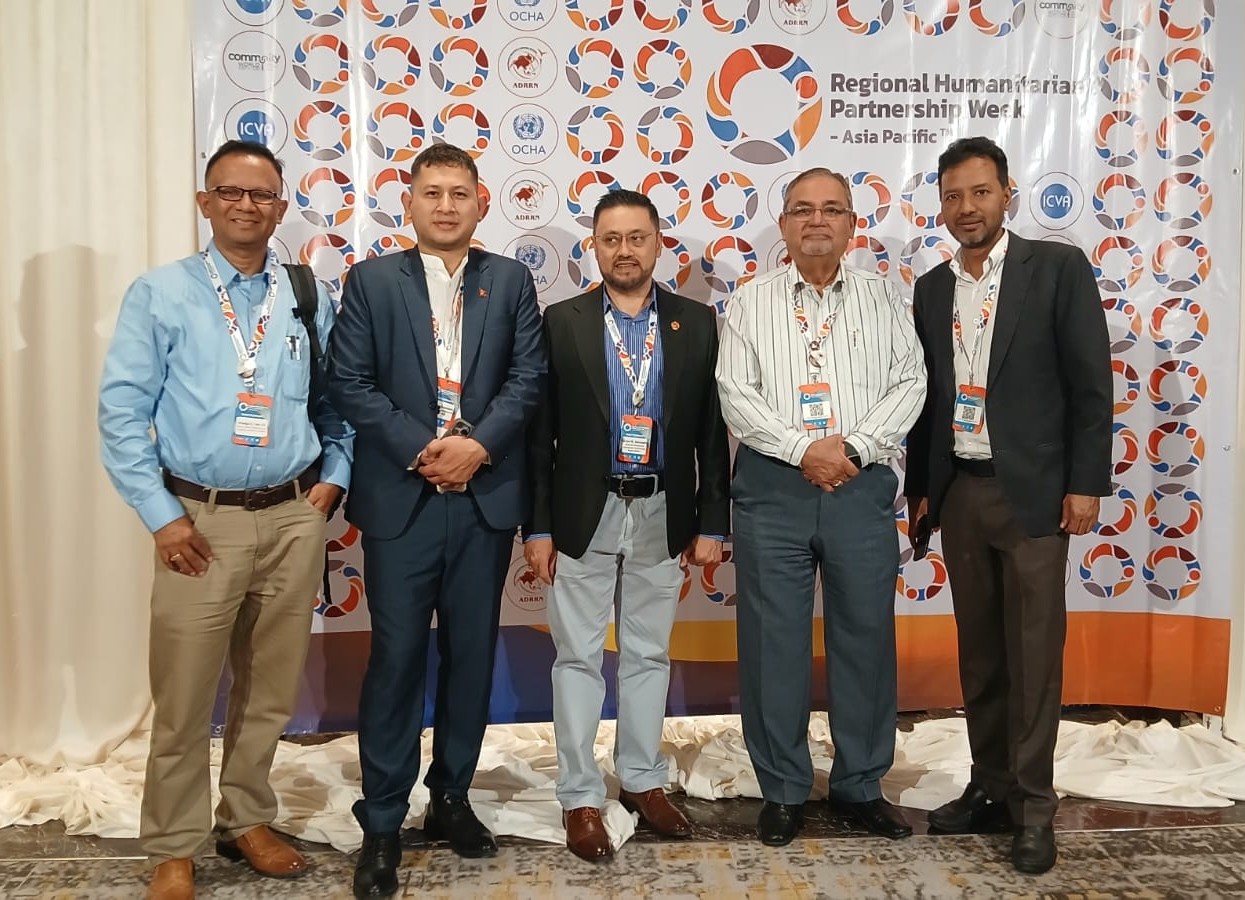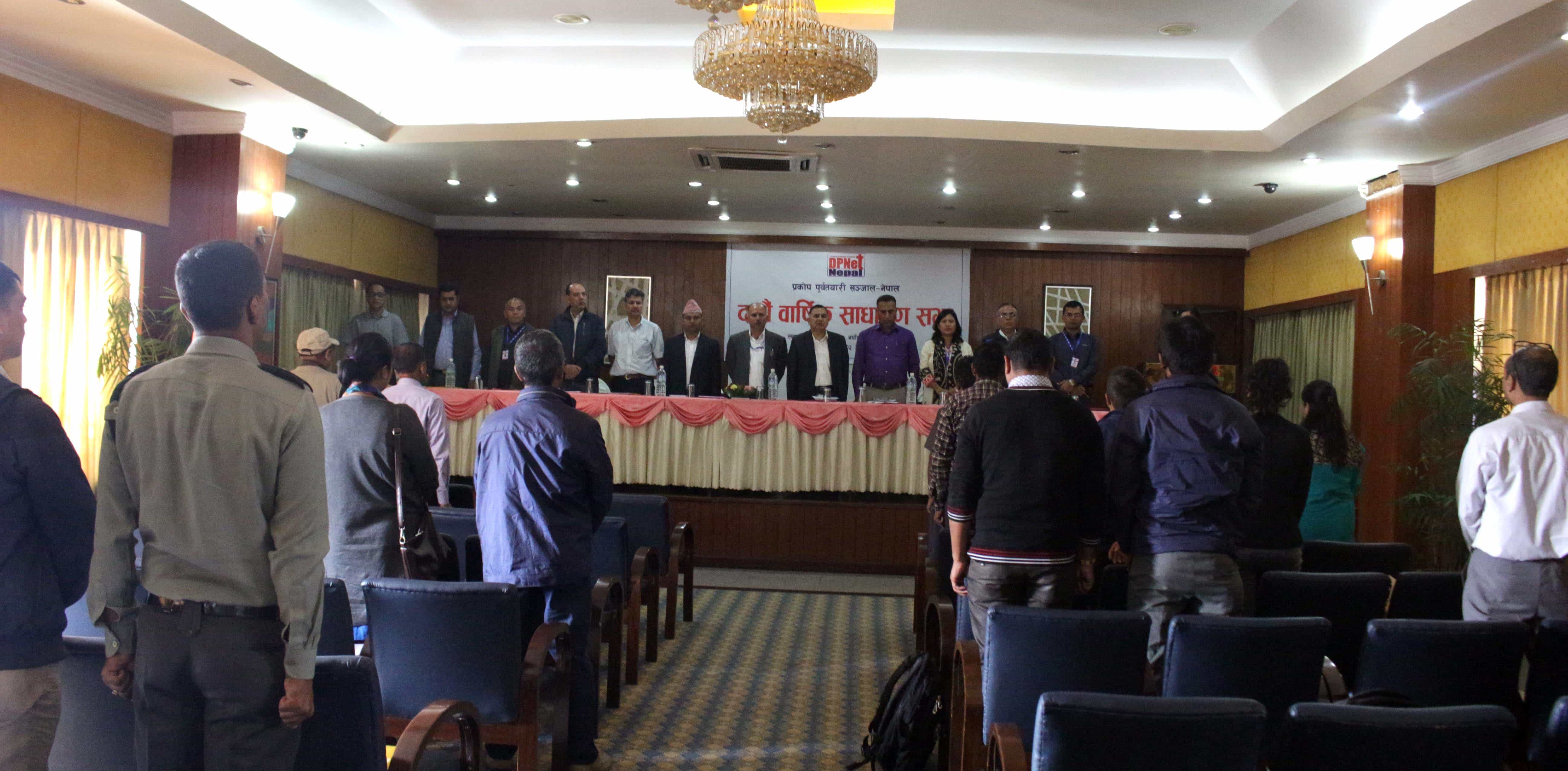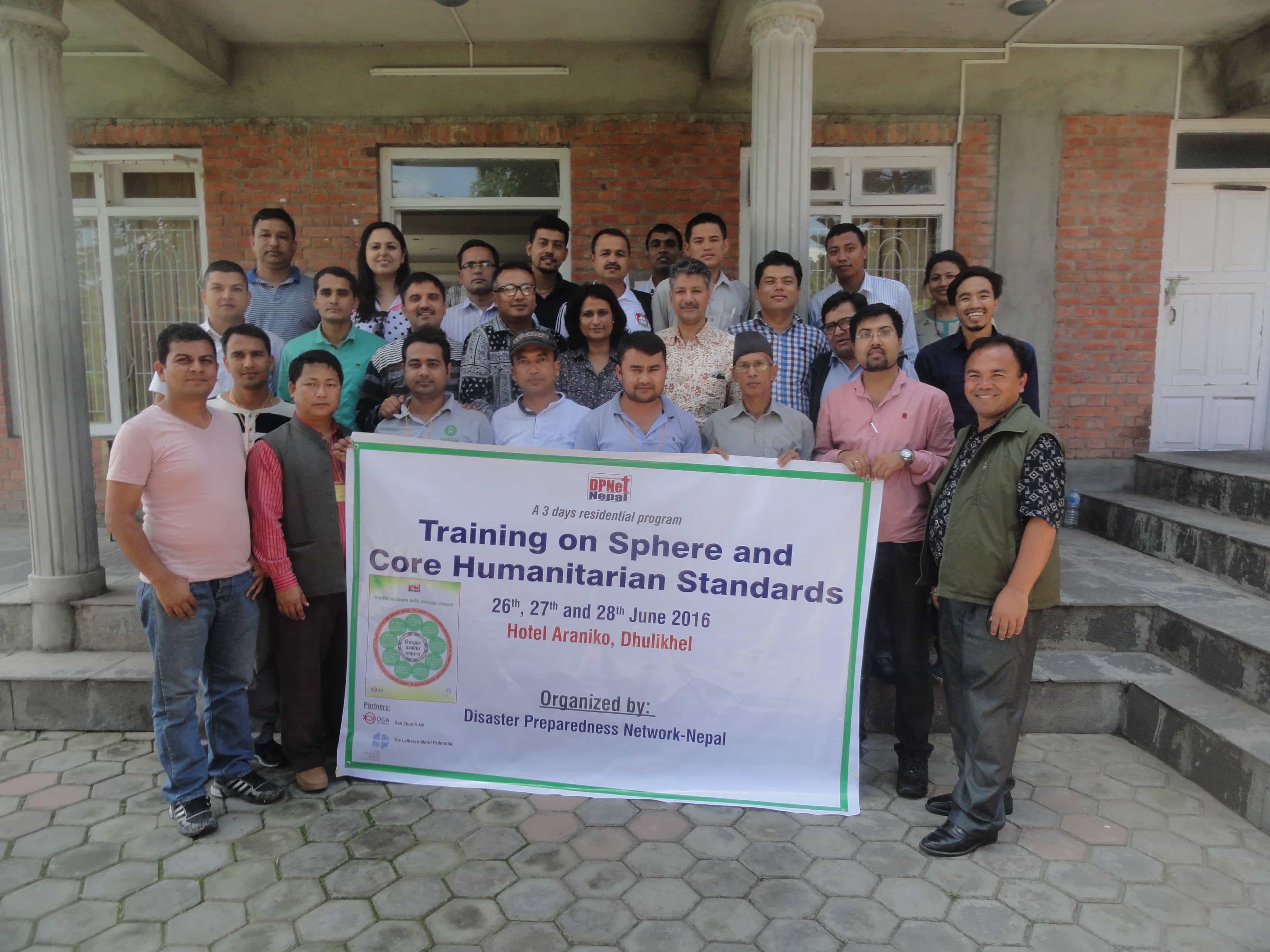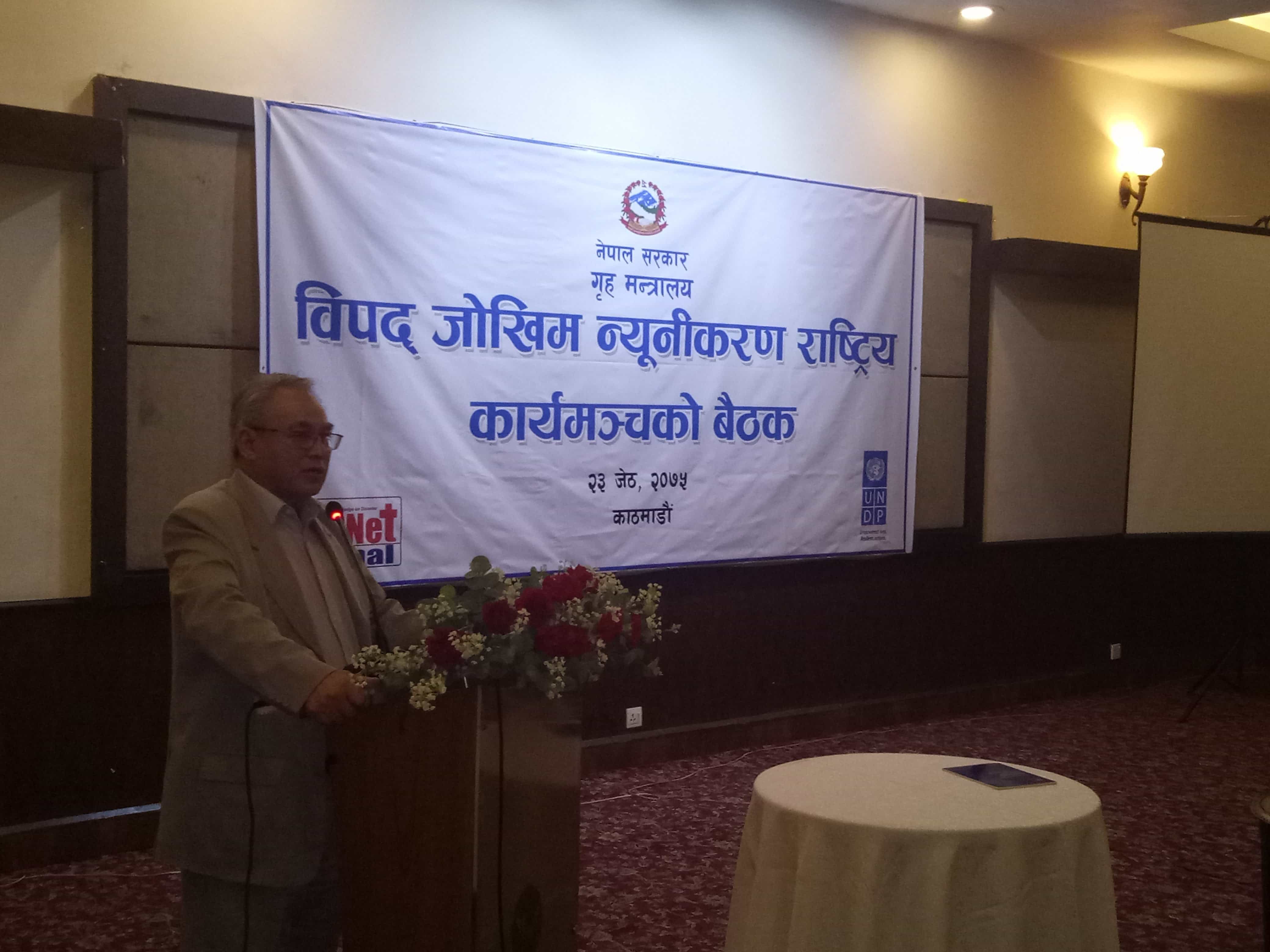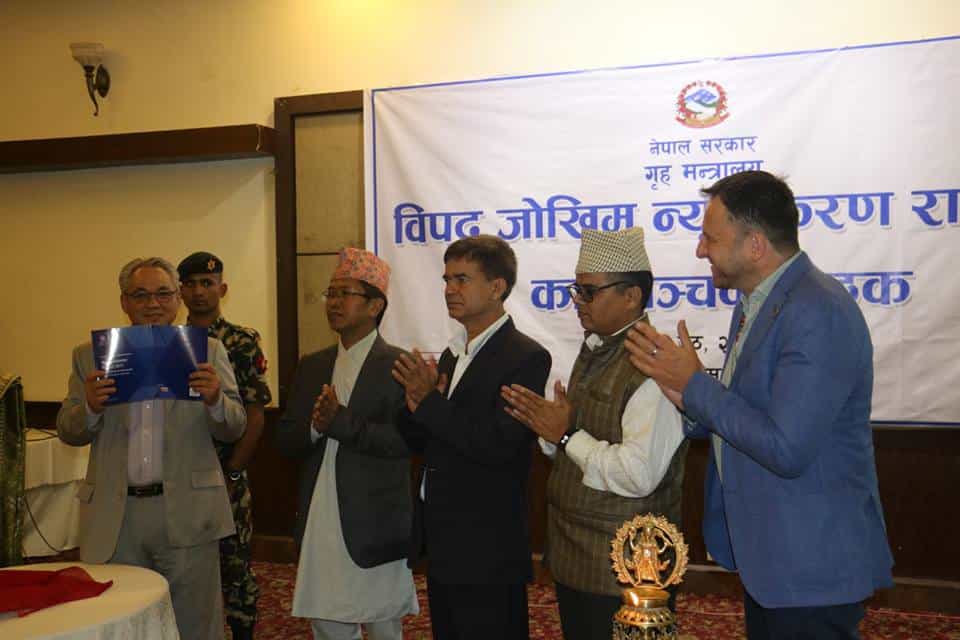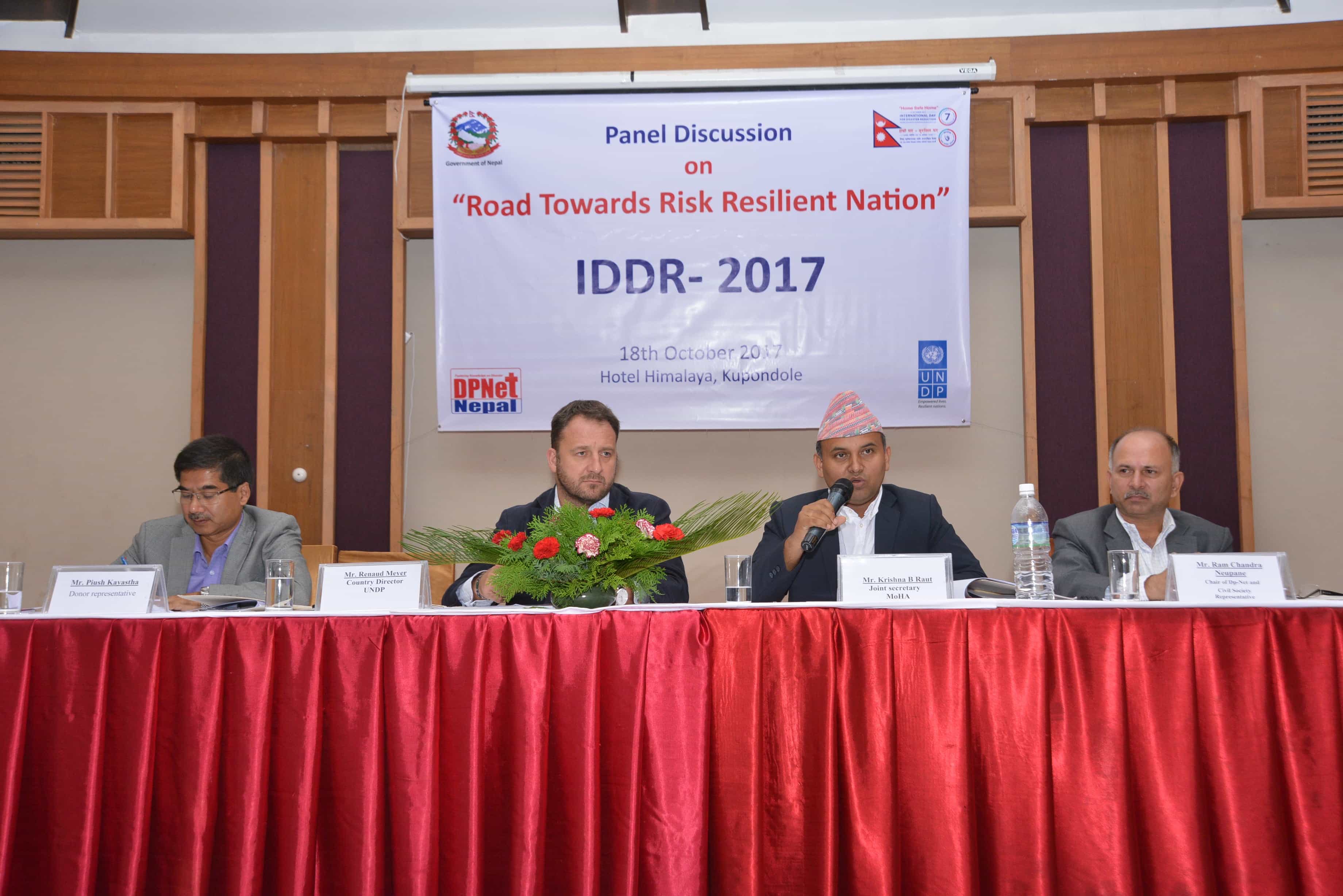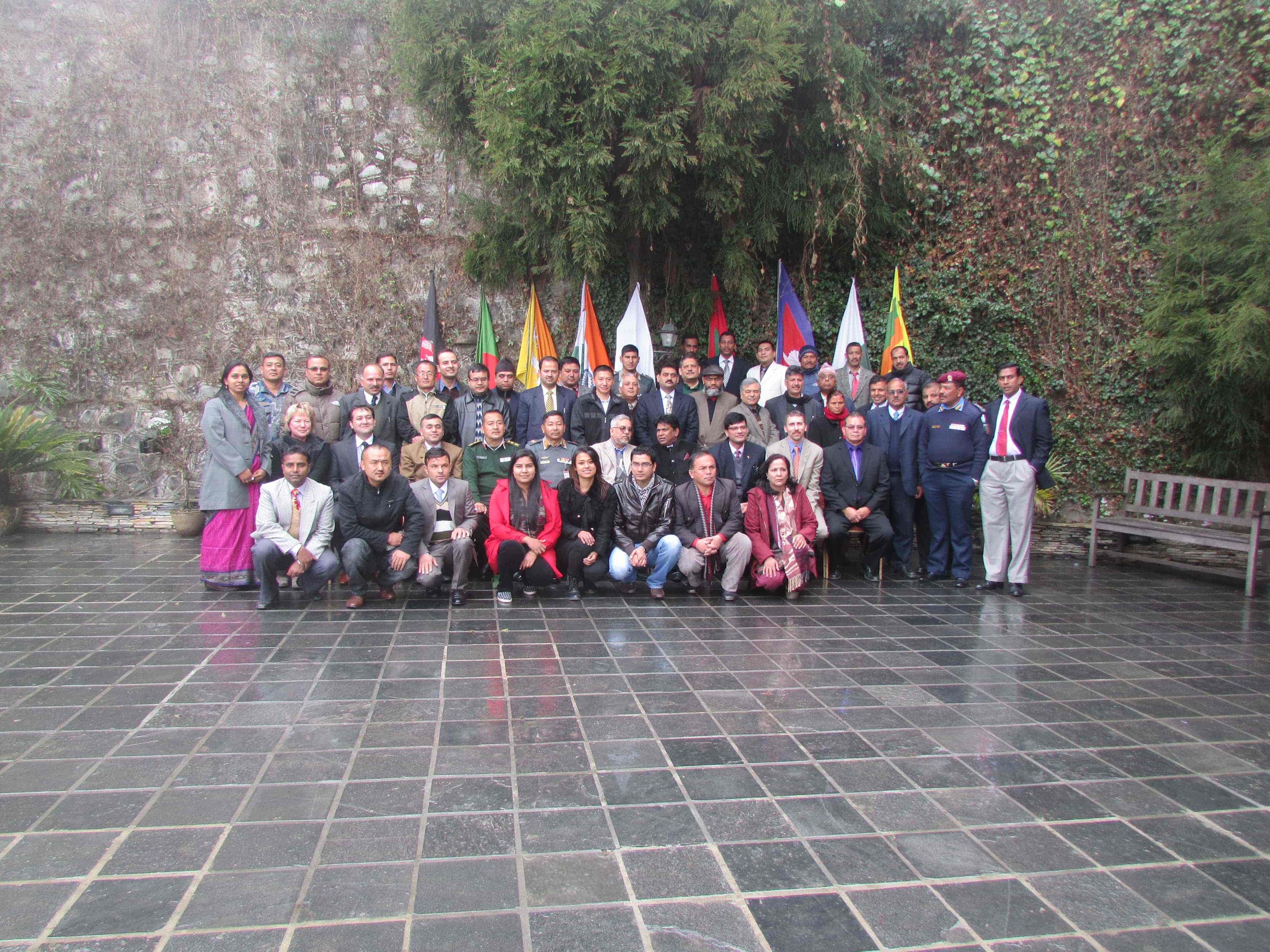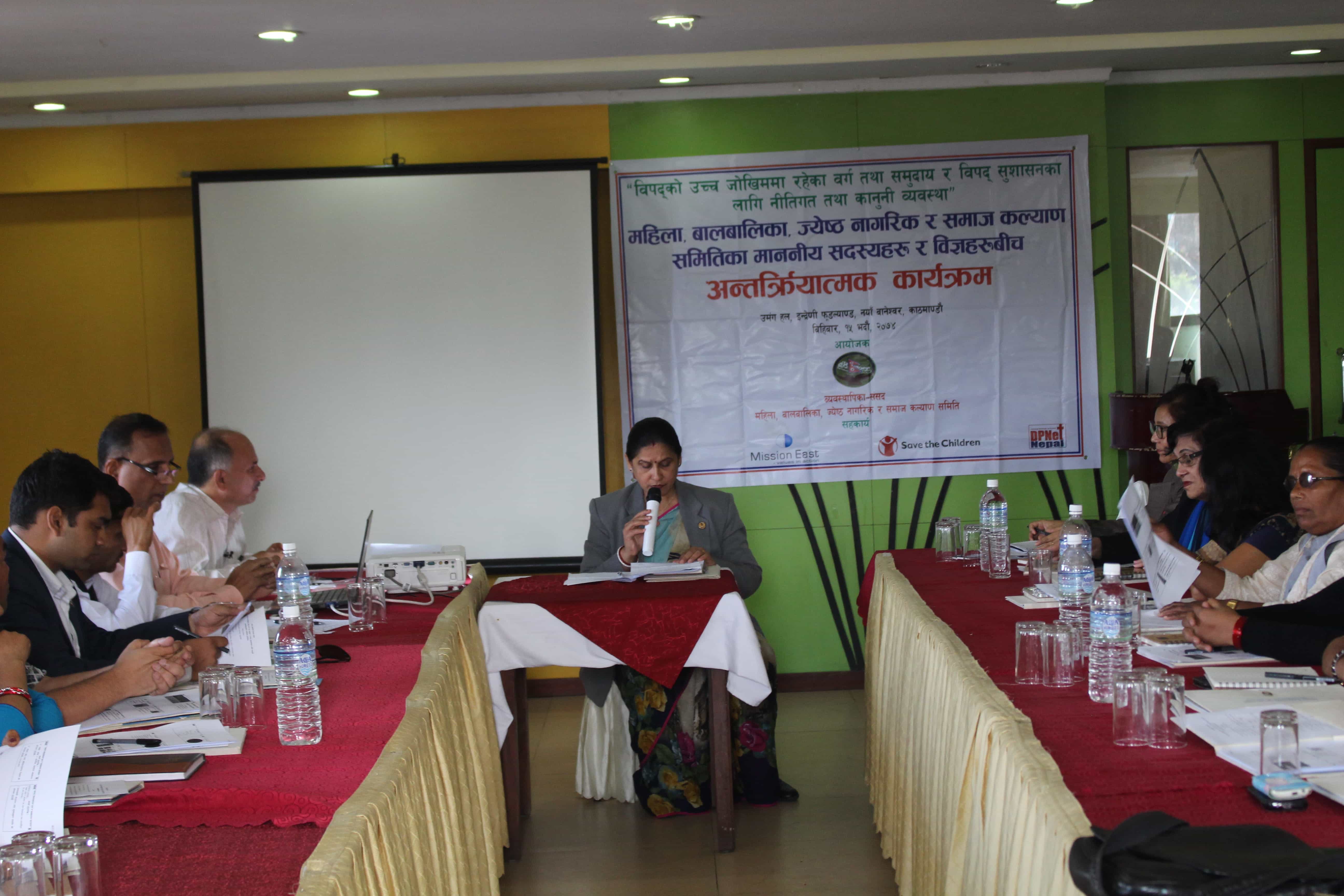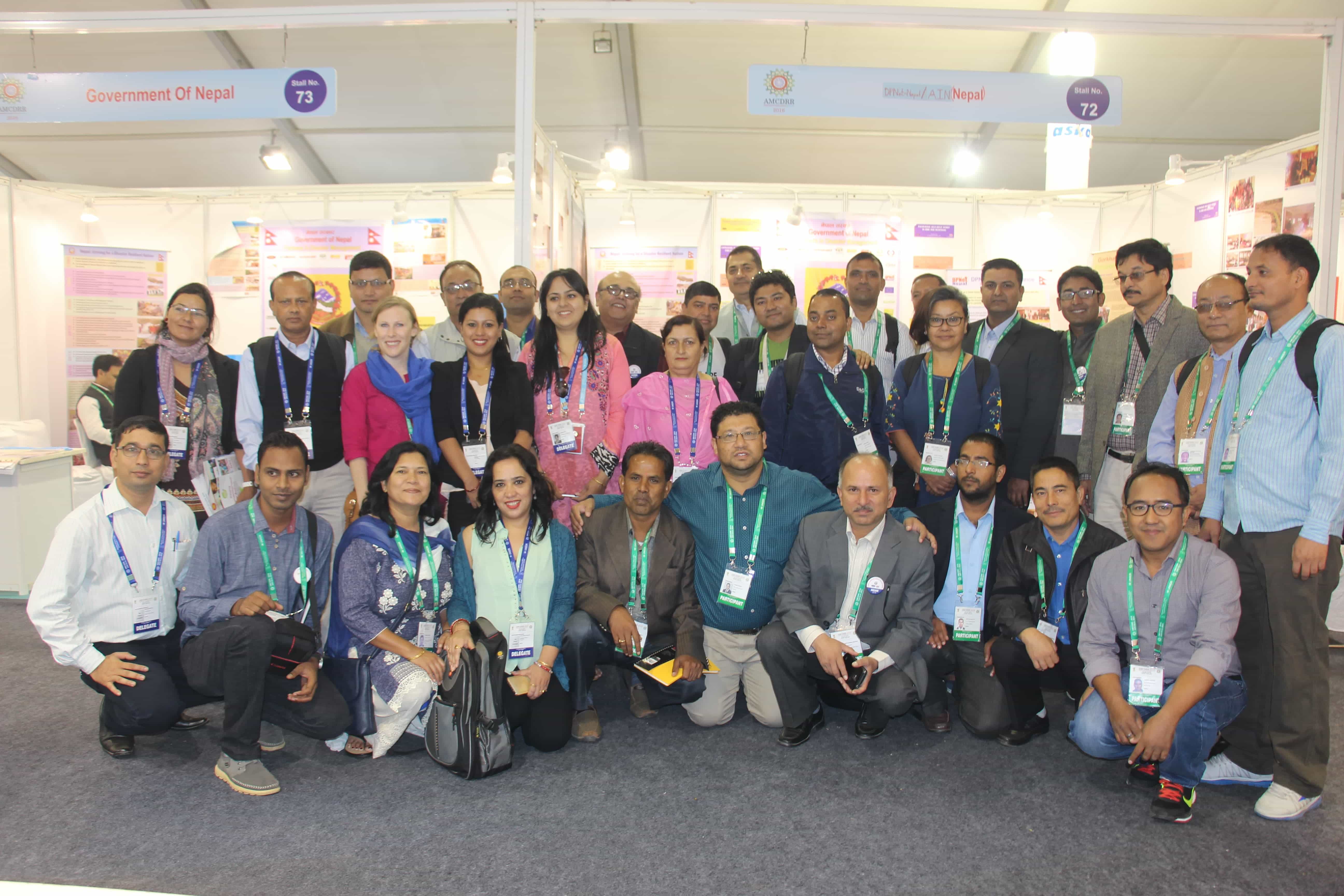A Policy Dialogue on: Exploring Challenges and Opportunities in Landslide Management in Nepal
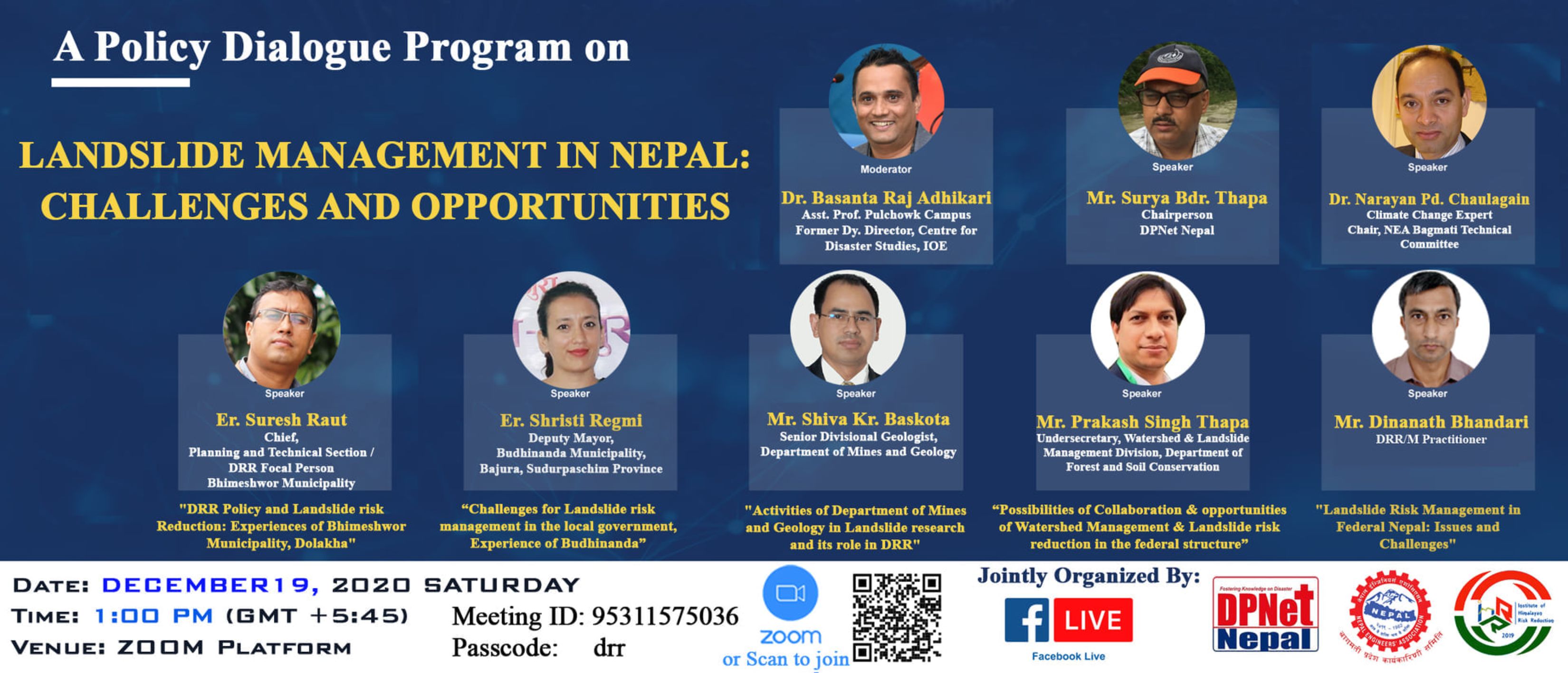
A Policy Dialogue on: Exploring Challenges and Opportunities in Landslide Management in Nepal
The joint organization of the Policy Dialogue program on Landslide Management in Nepal: Challenges and Opportunities involved DPNet-Nepal, Institute of Himalaya Risk Reduction, Nepal Engineer's Association, and Bagmati Province on December 19, 2020. The program was chaired by Er. Nanda Lal Banjade, the President of Nepal Engineer's Association, and attended by Dr. Ganga Lal Tuladhar, a former Education Minister and DRR&M expert, as the chief guest. Additionally, Mr. Surya Bahadur Thapa, Chairperson of DPNet-Nepal, and Prof Dr. Tri Ratna Bajracharya, President of Nepal Engineers' Association, participated as special guests.
On behalf of the organizers, Mr. Surya Bahadur Thapa extended a warm welcome to all participants and provided a brief introduction to DPNet-Nepal. He highlighted that Nepal, as a disaster-prone country, has been experiencing recurrent water-induced disasters. Although there are legal documents on disaster risk reduction and management (DRR&M), the country still lags in preparedness to address the multifaceted impacts of such disasters. Mr. Thapa emphasized the need to raise awareness at the local level and enhance their capacity to effectively manage risks. He expressed optimism that the discussion during the program would be valuable, with the speakers shedding light on the existing gaps and challenges in landslide management in Nepal.
Dr. Narayan Chaulagain, a Climate Change Expert and Chair of Nepal Engineer's Association Bagmati Technical Committee, delivered a presentation on Landslide Management under Climate Change. He provided insights into the relationship between landslide management and climate change, discussing climate change science, its impacts, the causes of landslides, and the management of landslides in the context of federalization. Dr. Chaulagain emphasized the importance of transitioning from haphazard development to sustainable development that takes into account the environmental, social, and economic aspects.
The presentation session was moderated by Dr. Basanta Adhikary, Assistant Professor at Pulchowk Campus and former Deputy Director of the Centre for Disaster Studies, IOE.
Er. Suresh Raut, Chief Planning and Technical Section/DRR Focal Person of Bhimeshwor Municipality, presented on "DRR Policy and Landslide Risk Reduction: Experience of Bhimeshwor Municipality, Dolakha." His presentation covered the DRR&M Act, Policy, and Strategic Action Plan at the municipality level. He discussed the identified sectors in the municipality, their current status, and the policy provisions and implementation status of landslide risk reduction. Er. Raut emphasized the importance of coordination between the Provincial and Local Governments for effective landslide risk management. He concluded by highlighting the role of creative initiatives like community-based early warning systems in mitigating the impact of natural landslides.
Mr. Shiva Kumar Baskota, Senior Divisional Geologist from the Department of Mines and Geology, presented on "Activities of the Department of Mines and Geology in Landslide Research and its role in DRR." His presentation focused on studies and findings of landslides conducted during the monsoon season by the department. He shared information about emergency geological studies, which involved a detailed stability assessment of 107 settlements across eight districts. Mr. Baskota also discussed major types of landslides in Nepal, approaches, future plans, and lessons learned. The future plans included the utilization of geophysical instruments for landslide investigation, precise location tracking using GPS, and change detection techniques.
Er. Shristi Regmi, Deputy Mayor of Budhinanda Municipality, Bajura, presented on the challenges of Landslide risk management in local government, based on the experience of Budhinanda. Her presentation included data, pictorial information, and insights into the loss and damage caused by water-induced disasters in Bajura district. She highlighted the roles and responsibilities of the DRR&M committee of Budhinanda Municipality and stressed the importance of conducting Initial Environmental Examinations (IEE) and Environmental Impact Assessments (EIA) before commencing projects. Er. Regmi also pointed out the budgetary constraints faced by the municipality in allocating sufficient funds for DRR&M activities.
Mr. Prakash Singh Thapa, Under Secretary of the Watershed and Landslide Management Division, Department of Forest and Soil Conservation, presented on the possibilities of collaboration and opportunities for Watershed Management and Landslide Risk Reduction in the Federal Structure. His presentation covered the status and possible causes of landslides, activities related to soil conservation and watershed management, constitutional and policy provisions, potential coordination and collaboration, and working with the three tiers of government. Mr. Thapa emphasized the need for human resource management, capacity building, land use mapping, and the preparation of a watershed atlas to effectively manage landslides.
Mr. Dinanath Bhandari, a DRR&M Practitioner, presented on "Landslide Risk Management in Federal Nepal: Issues and Challenges." His presentation delved into understanding the causes of landslides in Nepal, improving DRR&M governance, and the challenges of mitigating erosive practices and connecting various sectors involved. Mr. Bhandari highlighted the requirement for a multi-sectoral effort, long-term joint research, and stakeholder involvement to effectively manage landslide risks. He also shared good practices such as risk mapping and zonation for appropriate land use, integrated watershed management, and risk-sensitive construction techniques.
Discussion Questions from the Floor:
- What are the contributing factors to an increased reduction in landslide risk in Nepal? What acts as an obstacle to landslide risk reduction, and what approaches enable it at the local level from the government's perspective?
- Are there Environmental specialists and geologists present at the local level?
- Could you provide clarification on the status of DRR (Disaster Risk Reduction) in Nepal?
- Is there a coordination plan in place between NDRRMA, the Department of Mines and Geology, and other relevant agencies regarding landslide management in Nepal?
- How is scientific information shared between the Department of Mines and Geology and the Department of Hydrology and Meteorology? What is the mechanism for this exchange?
- Is coordination the sole problem in landslide management, or are there additional issues related to mandates?
- Why are university and research institutions unable to participate in science-based research regarding landslides?
Expert Answers:
- In Bhimeshwor municipality, landslides can be categorized into two types. It is essential for the local and provincial-level governments to collaborate on landslide risk management. However, there is a lack of coordination among the three tiers of government. The use of a dozer is one of the factors that trigger landslides at the local level, and implementing legal provisions can help mitigate the risks.
- At the local level, there are no designated environmentalists and geologists, although the relevant department has been established.
- Despite our efforts to reduce the risk, landslides are given less priority as a disaster.
- Reports related to Disaster Risk Reduction (DRR) are received through the Ministry of Home Affairs (MoHA), the Department of Mines and Geology, and the National Disaster Risk Reduction and Management Authority (NDRRMA). Provincial geological maps are created and disseminated, and efforts are being made to raise awareness and sensitize stakeholders at the provincial level.
- Currently, there hasn't been significant progress in sharing scientific information, although coordination is in place for rainfall data.
- The National Disaster Risk Reduction Strategy and Action Plan (DRRSAP) outlines provisions regarding DRR&M. However, there is a lack of clarity in terms of mandate and accountability, and responsibilities among government departments seem to contradict each other.
- While universities and research institutions are engaged in research activities, it would be more beneficial to foster coordination with provincial and local-level governments.
According to Prof. Dr. Bishal Nath Uprety, it is crucial to give due importance to Disaster Risk Reduction and Management (DRR&M). Despite 30 years of work in this field, a systematic approach has been elusive. The responsibility for preparing the national-level landslide hazard risk map lacks a clear mandate. Standardization of parameters for creating the hazard map is necessary. Although substantial resources are invested in map preparation, its utilization is lacking, highlighting the need for a scientifically sound map. Building a team comprising hydrologists/meteorologists, geologists, and civil engineers is essential for studying landslides. While not all local levels may be able to afford such technical experts, at least districts can consider appointing them.
During his remarks, Dr. Ganga Lal Tuladhar shared the long-term vision of "Nepal Prosperous Nepal, Happy Nepali," which represents the government's ambitions, goals, and strategies. He highlighted the framework of this vision and the establishment of various councils and committees related to DRR&M in Nepal. He emphasized the necessity of conducting comprehensive studies by deploying technical teams to investigate significant landslides. Additionally, he advocated for the creation of integrated settlements that consider the link between settlement patterns and livelihoods. Dr. Tuladhar stressed that the state should prioritize expert opinions, technical expertise, and scientific approaches to foster innovation in DRR&M efforts in Nepal.
In his closing remarks, Er. Nanda Lal Banjade, the chairperson of the program, highlighted the connection between the dozer practice in Nepal and the political economy, which directly impacts landslides in the hilly regions of the country. He emphasized the importance of implementing land use policies, integrated settlement approaches, and watershed management to effectively reduce disaster risks. Er. Banjade expressed his gratitude to the chief guest, speakers, program moderator, participants, and organizers for their valuable presence, which contributed to the successful execution of the program.
